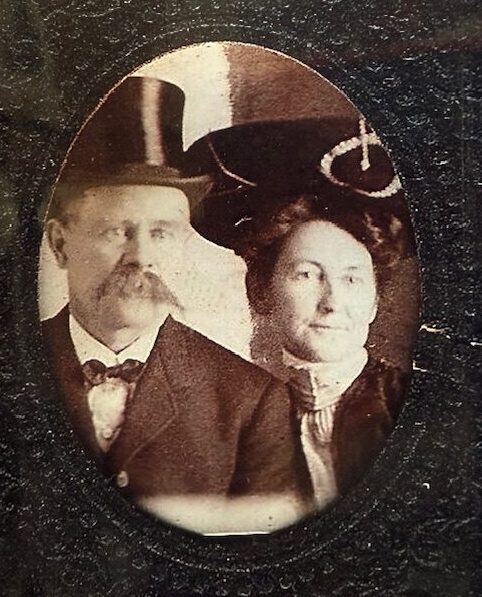
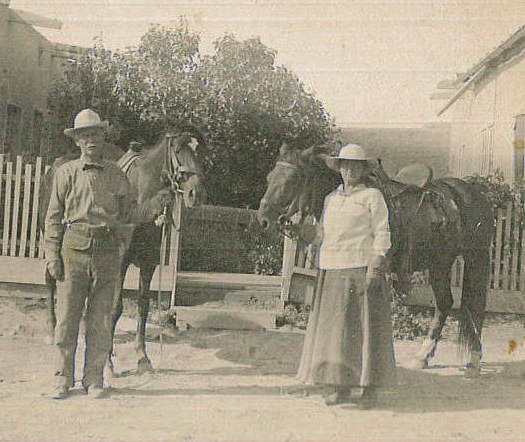
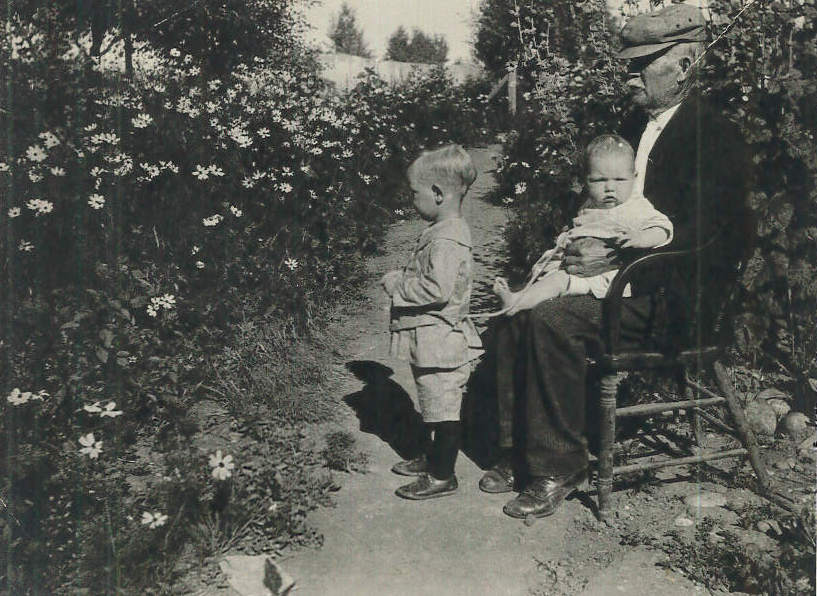



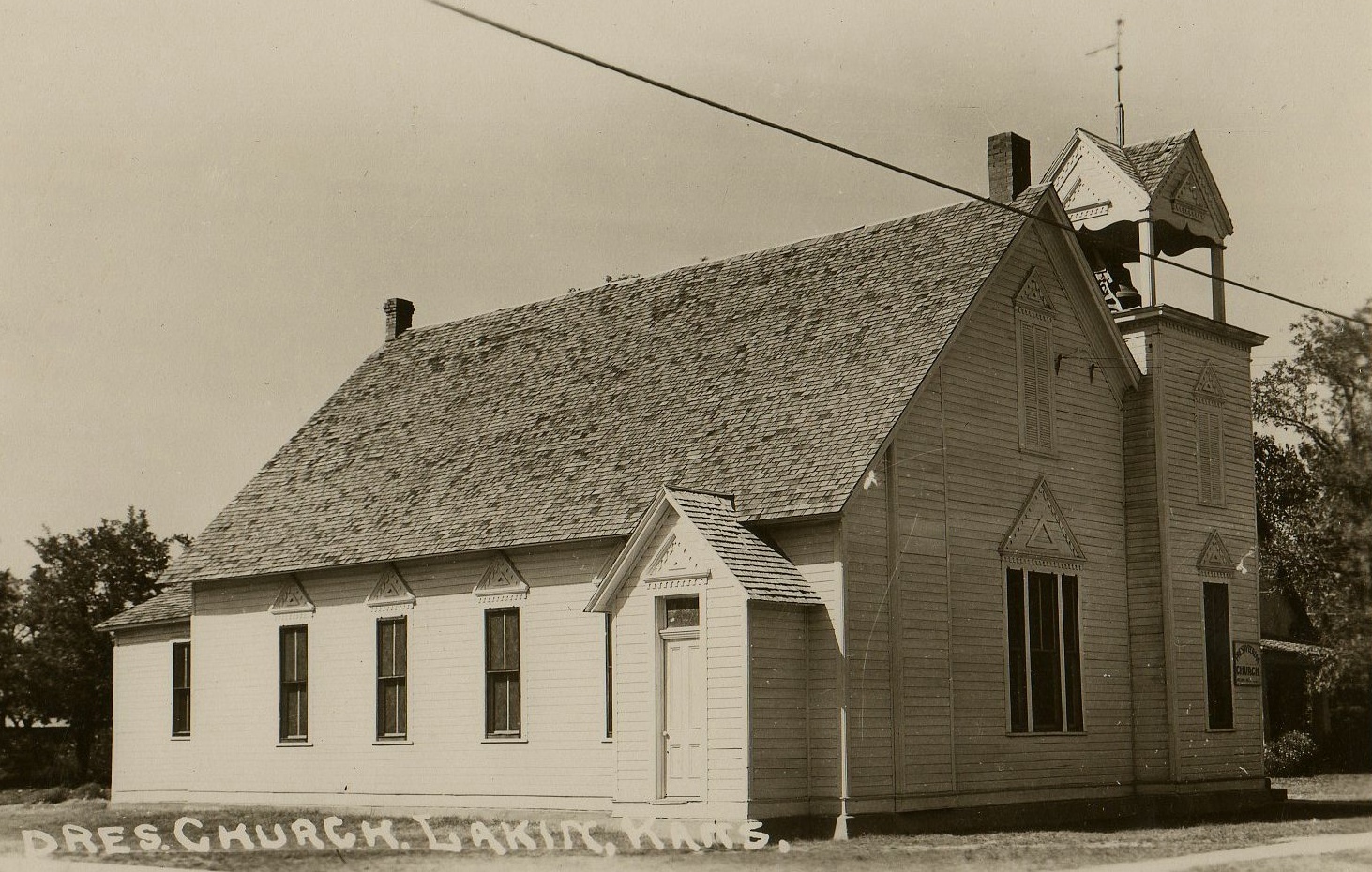 Dr. Browning of Garden City delivered a stirring sermon at the first services in the church on Thursday, July 11, 1895. This was the first segment of a four-day grand dedication service which included sermons by C.E. Williams, pastor of the local Methodist congregation, and ministers from Wichita and Hutchinson. On Sunday, July 14, the church building was crowded to full capacity with many friends from Hartland and Deerfield in attendance. Dr. S.B. Fleming of Wichita surprised the crowd when he announced that $450 was to be raised before the dedication exercises could be completed. In less than 30 minutes, $460 had been given either in cash or by promise.
Dr. Browning of Garden City delivered a stirring sermon at the first services in the church on Thursday, July 11, 1895. This was the first segment of a four-day grand dedication service which included sermons by C.E. Williams, pastor of the local Methodist congregation, and ministers from Wichita and Hutchinson. On Sunday, July 14, the church building was crowded to full capacity with many friends from Hartland and Deerfield in attendance. Dr. S.B. Fleming of Wichita surprised the crowd when he announced that $450 was to be raised before the dedication exercises could be completed. In less than 30 minutes, $460 had been given either in cash or by promise.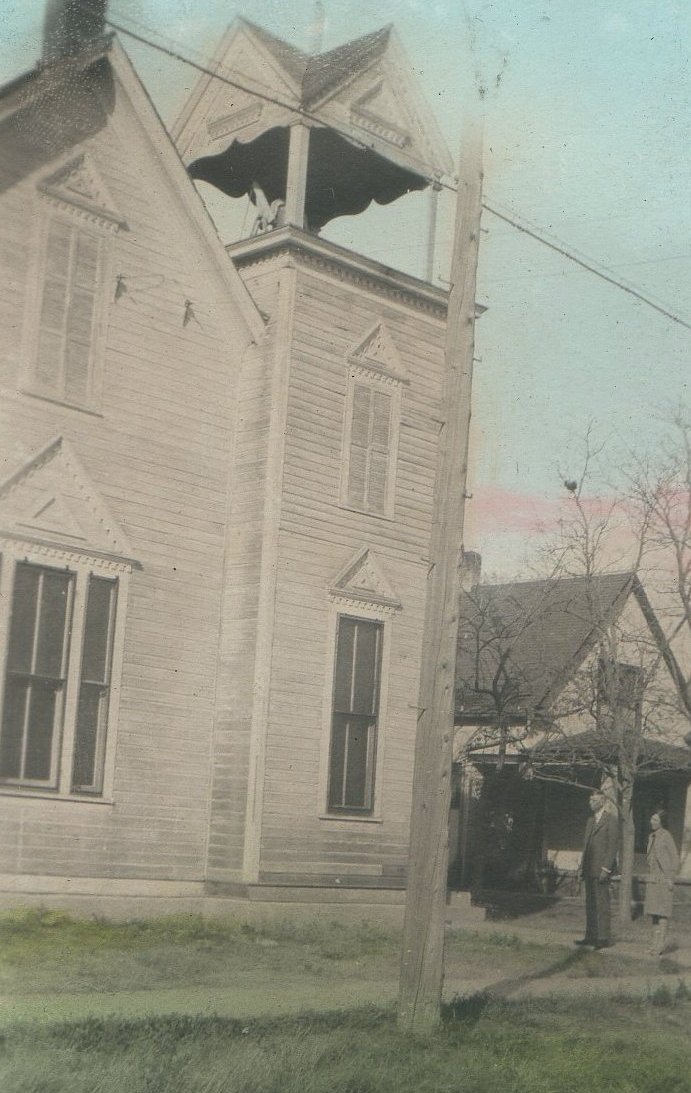
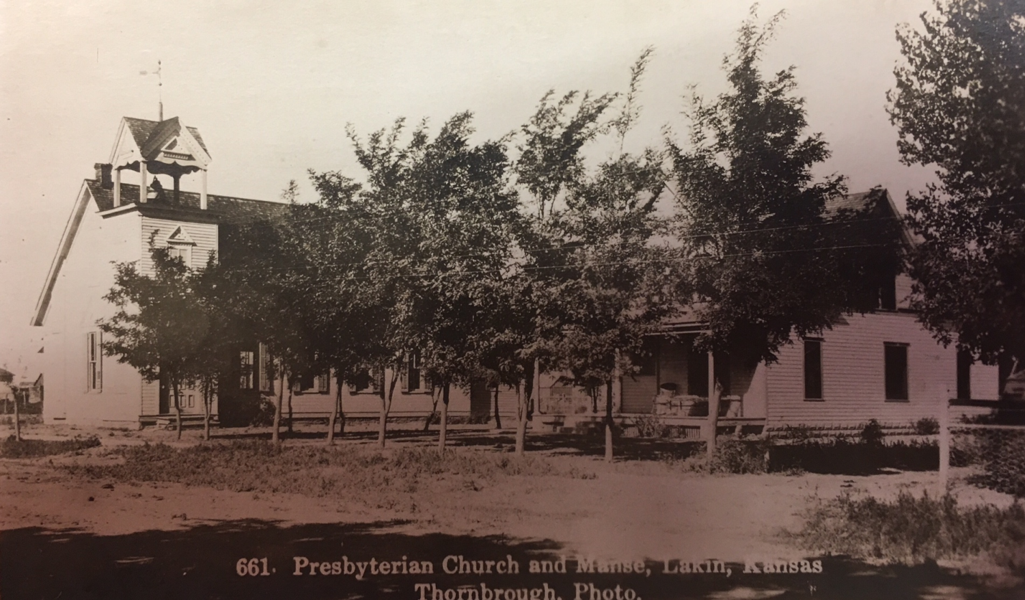

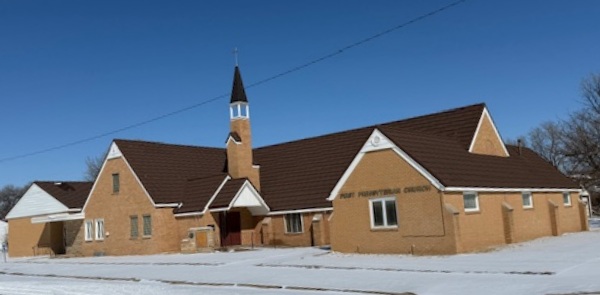
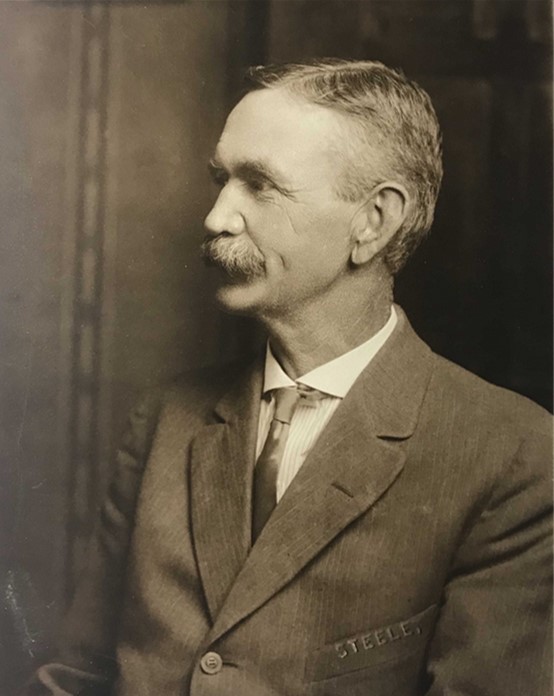

David Harold Browne came to Kearny County to work as a clerk in the railroad eating house. The oldest of three boys born to Charles Browne and Helen Potter Browne, Harry was born at Cowansville, Canada on April 18, 1859. While growing up, he spent much of his leisure time ice-skating and attending “sugar-off” parties, a French-Canadian tradition that brought friends and families together to enjoy the sugar high that comes from boiling maple sap into taffy. Harry’s father was a doctor, and Harry often helped in his office and rode with him to visit patients and help with emergencies. The knowledge of medicine which Harry gained in this way was most useful to him in later years as a pioneer in Western Kansas.
His father died five days before Harry’s seventeenth birthday, and his mother moved the family to Chicago, Illinois where her people lived. Harry had to quit school and go to work to help support his mother and brothers. His first position was as a clerk for a packing company, and in 1880, Harry joined his maternal uncle, Guy Potter, who was managing the eating house here. Shortly after Fred Harvey became the proprietor of the dining hall/hotel, the building was moved to Coolidge which became the division point of the Santa Fe Railroad. Harry remained here, and for a time, he joined Alonzo Boylan and Rolla Walter in catching and taming wild horses which they sold to cowboys and horse traders. After a time, Harry took a clerk position at John O’Loughlin’s general store.
While working for O’Loughlin, Harry met Maria Dillon, one of Lakin’s most popular young women. Born in New York City on June 17, 1866, Maria lost her mother as a small child and was educated in a convent in Montreal, Canada. She came to Kearny County in 1879 with her father, step-mother and younger siblings, and she made a name for herself as one of the best compositors in Kansas while working at the Lakin Herald where her father served as editor. Wearing a blue silk taffeta dress fashioned with a fitted basque and pleated bustle, Maria married Harry in an evening ceremony on April 7, 1886, at the dugout home of her brother in-law and sister, Alexander and Annie Cross. Three children were born to Harry and Maria: Helen Florence (Mr. J.H. Rardon), Charles Harold, and Hazel Louise (Mrs. F. Ivor Williams).
Harry was the first elected county clerk of Kearny County, and the Browne family moved eventually to Hartland and then back to Lakin when Lakin won the 1894 election. Harry recalled that one of the most dramatic events in his life was counting votes for the location of the county seat. Each town that had entered the race had the privilege of sending men to see that the votes were properly counted. Barney O’Connor was Lakin’s representative and stood over the election judges with six-shooter in hand, and Harry said he never expected to get out of the building without someone being killed. He was re-elected to the county clerk position several times, serving until 1896, and also worked as assistant cashier in the Kearny County Bank.
When Harry’s health failed, his doctor recommended a change of climate. Harry decided to buy a team and wagon and go overland to Colorado Springs, taking his herd of purebred jersey cattle and selling them along the way. One fine June morning in 1896, the Browne family stored all their worldly possessions in a covered wagon and started to Colorado. First was Maria with one of the girls in a top buggy drawn by a blaze-faced bay horse named Bally, then came the wagon to which were hitched two large gray mares with Harry as driver, and then the herd of cattle urged on by Doc Miller, the hired hand. Except for being awakened one night by water flooding their campground, the trip was uneventful. It took about a month to complete the journey and dispose of the cattle. At Colorado Springs, Harry engaged in the coal business with his friend, Frank Kelly, whom he had made acquaintances with earlier in life.
After three years and the death of Ben Bacon who was the cashier at Kearny County Bank, Harry was beckoned back to Lakin to fill Bacon’s shoes. Harry was always interested in everything for the advancement of his town and county and gave generously of his time to that end serving as a member of the board of education and on the city council. He was an ardent fisherman and lover of nature, and when worries and pressures of business weighed heavily upon him, he would spend the day fishing at Lake McKinney. Harry always came back with a cleared mind and refreshed body. He had the gift of being a good listener and gave to others a feeling of strength and confidence.
Harry maintained his position at the bank until his death on March 8, 1931. He had been in failing health for some time, but the trooper that he was, Harry continued working until three days before his death. He was loved and respected by all who knew him, and all the banks and business houses in Lakin closed during his funeral. Known as Gippy to his grandchildren, his granddaughter, Cora Rardon Holt, wrote of him, “I shall always remember his long fingered, iron strong hands. They revealed his character and always gave me a sense of comfort and security.”
Maria, or Gammy as she was known to her grandchildren, died on Oct. 18, 1948, as a result of shock caused by burns she received earlier that day. It was thought that her robe may have caught on fire as all three burners of her oil stove were lit, and coffee was boiling on the middle burner. Maria also was very much loved in the community, and she was remembered for the sunny disposition that characterized her her entire life. She had been a lifelong caregiver; first to her younger siblings, then to her own children, grandchildren and great-grandchildren.

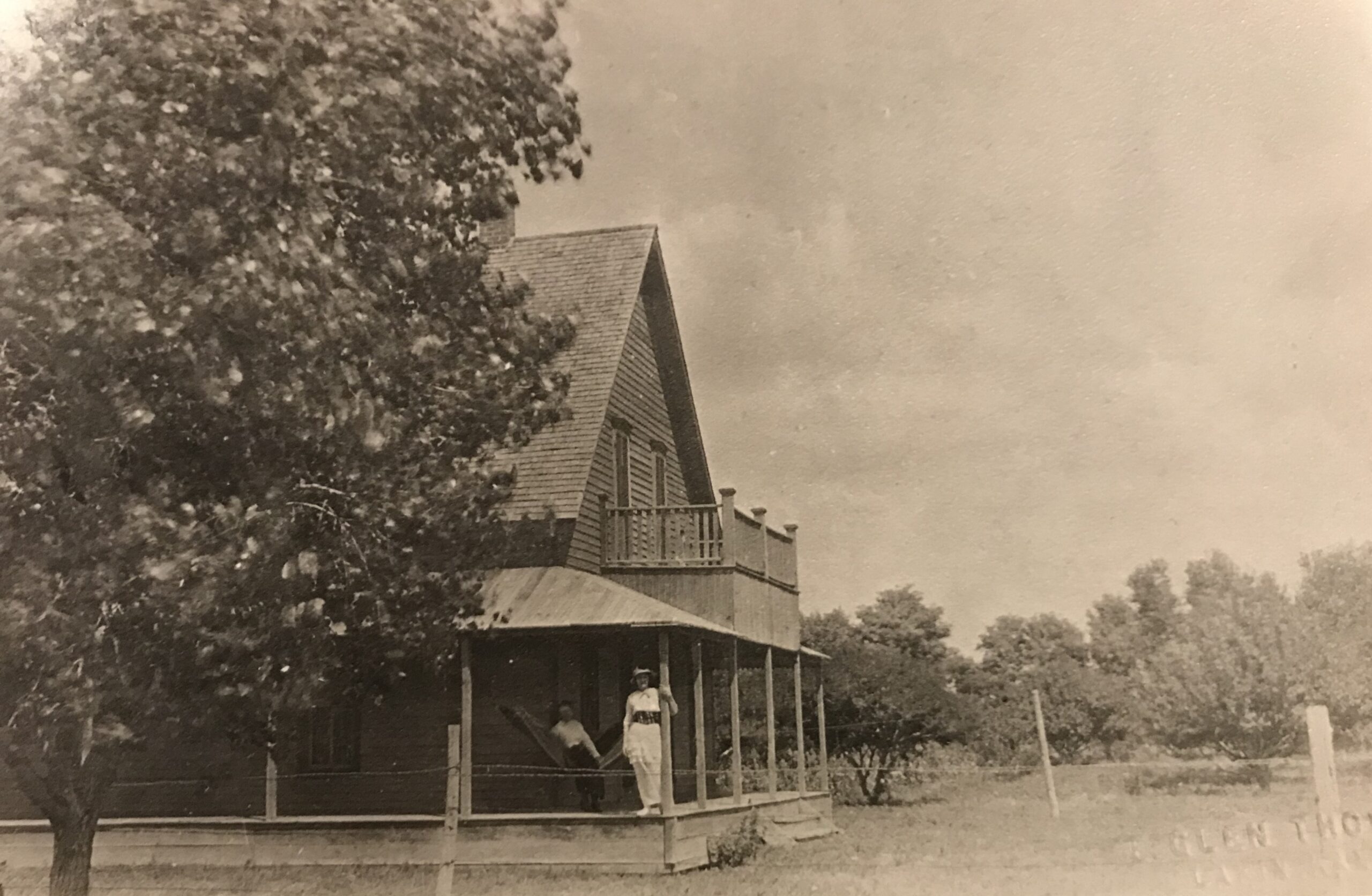
SOURCES: Information provided by the late Hazel Browne Williams and Charles R. Browne, great grandson of D.H. and Maria Browne; History of Kearny County Vol. 1; Ancestry.com; museum archives, and archives of The Advocate and Lakin Independent.